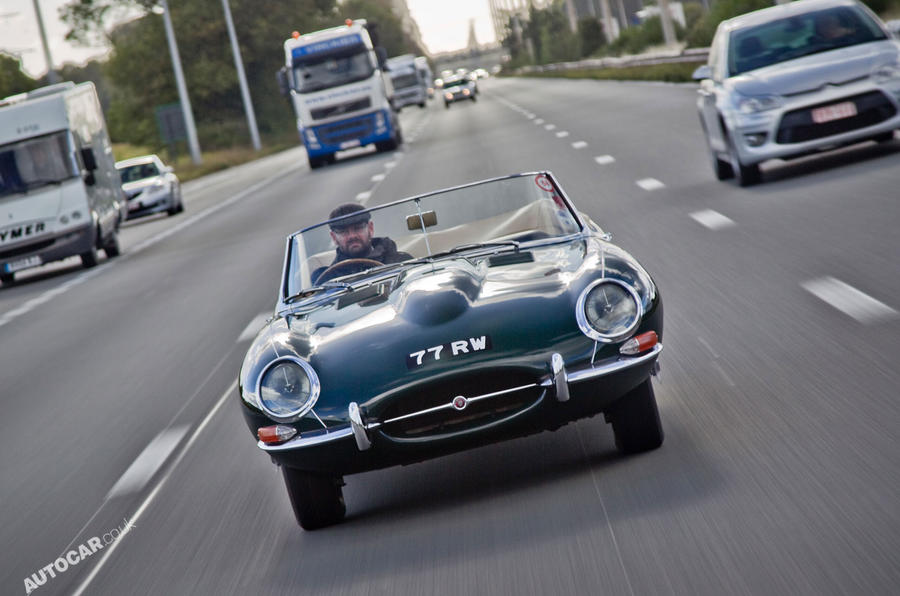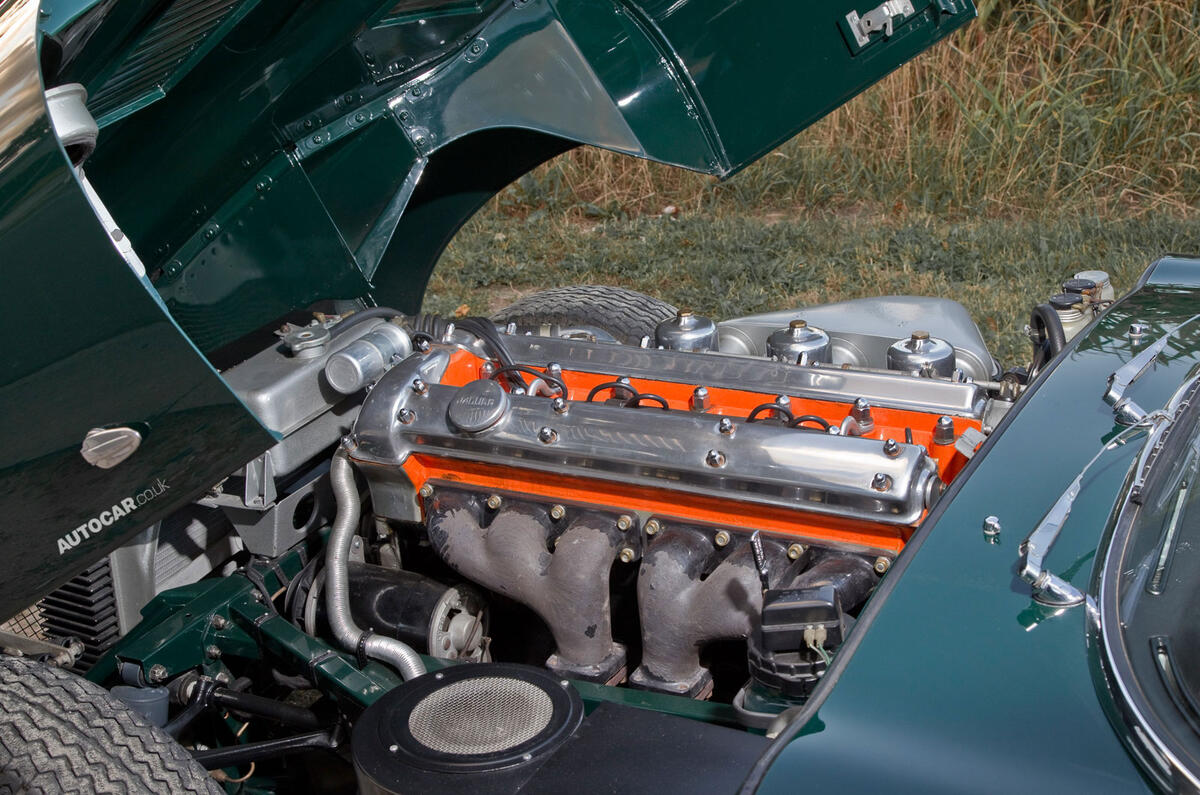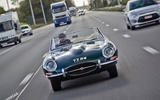Jabbeke, Belgium, 21 October 1953. Jaguar engineer and racing driver Norman Dewis slips into the cockpit of an XK120, ready to head on to the new Jabbeke highway to set a new production car speed record. Note the word ‘production’.
Dewis sits on a piece of foam on the floor, because with the seat in place, the aircraft canopy his colleagues are about to secure over his head won’t reach the bodywork. The passenger space is covered by a rigid metal tonneau and the underfloor is enclosed. The engine is in a high state of tune and the XK’s right front headlight has been removed to increase air density in the induction system. It’s a misty, cool early morning. Every extra horsepower counts.
Read our history of the iconic Jaguar E-Type
Dewis makes his first run and, minutes later, returns down the unopened carriageway to pass through a flying mile in both directions. His average speed of 172.4mph is a new record, verified by the Royal Automobile Club of Belgium.
The following week’s issue of The Autocar reports it in a couple of short paragraphs, and reminds readers that the canopy and undertray are offered as optional equipment on the XK. Which is, I presume, a bit like the spoilers and undertray Ford fitted to roadgoing Mondeos to homologate them for BTCC racing after Alfa Romeo arrived in the 1990s with wings and splitters. No one saw any of those, either. Car makers: bending the rules since time immemorial.
Anyhoo, 172.4mph was fast enough for the local police, who called time on official testing on the Jabbeke highway, reckoning that speeds were getting just a little too high.
Dewis continued to race for Jaguar, including at the awful 1955 Le Mans 24 Hours, and he remained Jaguar’s chief engineer for decades. Dewis still hopes to take the XJ13 (the car from which he emerged unscathed after a high-speed roll at MIRA) to 100mph on his 100th birthday.
The Jabbeke road, meanwhile, returned to public use. According to locals, the Jaguar test took place on a brand-new stretch between Jabbeke and the coastal town of Oostende, but the highway ran in the other direction from Jabbeke, too, past the small town of Aalter and east towards Gent. The Jabbeke-Aalter stretch had been used for previous speed records by closing one carriageway while contra-flowing traffic onto the other. It was no longer a satisfactory solution.
Yet, eight years later, just weeks before the Geneva motor show in March 1961, Jaguar was back. Or, rather, a Jaguar was back. The Autocar had been given a new E-type for road testing, weeks before its Geneva unveiling. It was a coupé, registration 9600HP, and on that same stretch of highway it hit 150mph. The Autocar’s great rival, The Motor (later incorporated into this magazine), was loaned a roadster for the same purpose; it reached 150mph in one direction, but not both, on a stretch of road in Italy.
















































Join the debate
Add your comment
3.8 XK120S ???
" At launch the E-type had a triple-carburettor 3.8-litre motor from the XK120S. "
I think that should read..At launch the E-type had a triple-carburettor 3.8-litre motor from the XK150S.
The XK120 was only ever a 3.4 as were the XK140's & most XK150's.
I suspect the ride quality is
I suspect the ride quality is as much to do with the normal profile tyres fitted to the E - Type, as opposed to the elastic bands that seem to be fitted as standard to "Sports" cars these days..
I believe 70 was the standard profile not 45 or less that is standard on modern Jaguars.
@ streaky
Spot on.
The new one won't ride anywhere near as well because that would make it slower around the Nurburgring, which is, of course, all that matters in everyday driving.
Have ridden in the back of a Series 1 XJ12 and a new XJ. No prizes for guessing which one feels like the more accomplished product when looking for a bit of comfort on British roads.
Let's not mention that the E was "exceptional value", what with the F starting at 60 grand.
*sigh*
DenTarthurdent wrote: The
Isn't the Nurburgring in danger of going bust? Perhaps we'd finally get some decent riding cars after its demise(!).
Lucky so-and-so: I'd love the chance to have a back seat ride in the legendary Series 1 XJ6/12!